Keeping up with the latest TV production technology is a necessity for studios, more than any other creative space. Michael Burns looks at how four are staying ahead of the curve
DOCK10
MediaCityUK, Manchester
Dock10 at MediaCityUK is not only the newest studio complex in our round-up, it also offers one of the largest HD facilities in Europe, operated in partnership with SIS. Recently rebranded, the seven HD television studios and two audio studios (one dedicated to the BBC Philharmonic Orchestra) are underpinned by a site-wide communications infrastructure throughout the MediaCity UK campus.
John O’Shaughnessy, head of technology operations, says this 3G fibre network, managed by Dock10, means that the facilities –including studio, post and technology services – are infinitely scaleable. “Any part of the facility can, and regularly does, connect to all other parts, including outside spaces,” he explains.“3G video resolution and Dolby 5.1 are available throughout, as desired.”
Dock10 utilises a fairly new concept in studio design by kitting out all the units with the latest Calrec Hydra2 Audio Networking system. This enables all studios and gallery spaces to interact and share audio resources with a minimum of hardware reconfiguration for each production. It comes in handy if a particular gallery needs to be used with a different studio floor.
“Being a start-up in our second year, all technology in use is at the cutting edge of what’s available to date,” says O’Shaughnessy. “This, along with Dock10’s specialist operations in content workfl ow, is a huge attraction to our clients, because together they provide the key factors in delivering successful outcomes.”
Plans for the future predominantly revolve around file-based workfl ows, aiming for a minimal need to manipulate media throughout its production lifecycle.
O’Shaughnessy refers to this as a “touch it once” approach. In addition to developing internal solutions to remain competitive, O’Shaughnessy’s team keep a close eye on the progression of broadcasters and post facilities to aid technology development at Dock10. The roadmap includes a rollout of cloud-based services, including remote edit, ingest and review, plus automated QC and direct filebased delivery to playout providers.
PINEWOOD STUDIOS
Iver Heath, Bucks
Pinewood Studios will, of course, forever be associated with blockbuster film production, but recently the opening of a new stage and hefty investment in technology has substantially boosted th TV facilities.
The kit list includes a Sony MVS7000 3ME vision mixer, Calrec Artemis Beam 64 fader digital audio mixing console, ATC 5.1 surround sound loudspeaker monitoring, Sony 25-inch and 17-inch OLED monitors and Panasonic
42-inch HD displays (with Harris source-selectable multiviewers available on all monitors), as well as an eight-channel DVS Venice multiformat server system with 48TB storage on DVS SpycerBox Ultra.
Broadcast director Paul Darbyshire points to the last of these in particular as a means to dramatically streamline media workflows.
“This system will provide the record and playback functions of a number of VTRs while making the media available immediately in any format for other production processes – graphics, edit, transfer, archive and more,” he explains.
“Our new installation is designed to be very flexible and versatile. The studio requirements of productions these days can be very different, so studios, control galleries and equipment have to be able to cope with many variations: from five cameras to 20, no audience to 600, moving lights, sets with numerous vision feeds, graphics systems, multiple audio and video formats, and so on.”
The needs of producers having to deliver shows in HD to broadcasters have also triggered much of the recent investment. “If at some point in the future broadcasters establish a new technical specification for delivery, TV studios and facilities will need to update their equipment accordingly,” he says. “Within that wider upgrade strategy, we listen to how our clients wish to produce their shows more efficiently and within budgets that are tightening. Hopefully this process makes our studio facilities more desirable to work in and more competitive.”
Pinewood is constantly looking to invest in its infrastructure and this week approved an extra 4,500 sq ft studio facility, including a new stage. A consultation on Pinewood Studios’ expansion continues, with a report due in the autumn. “We are also working on exciting plans to develop the land adjacent to the studios to provide further stage and production space,” Darbyshire says. Detailed plans will be unveiled later this year.
BBC STUDIOS & POST PRODUCTION
London, Elstree and Bristol
BBC Studios & Post Production has been forced to plan for the future more than most as next year it is due to temporarily relocate the majority of its operations to Elstree Studios from its base at Television Centre (TVC) in London.
“Technologically, we will offer a similar range of services,” says head of operations Steve Jenkinson. “But the number of studios we will offer at Elstree will be reduced from the level we currently provide at TVC. We will offer a range of studio sizes, including BBC Elstree Studio D [11,200 sq ft] and two medium-size studios [7,500 sq ft], plus use of the George Lucas stage [c.15,600 sq ft] at Elstree Studios Ltd. We will also have access to additional studio spaces as required.”
That’s not to say that the company is not also moving with the times. “We’ve installed new IT networks into the studios that offer high-speed internet for fi le transfer,” says Jenkinson. “It means that it’s now much easier for productions to receive and use viewer content, sent from tools such as Skype, which is becoming more popular.”
THE LONDON STUDIOS
Waterloo, London
The London Studios (TLS), as part of ITV, invests in technology based on the changing business requirements of a major broadcaster. “We are working with ITV and other UK broadcasters on a unified file-based delivery format, and will equip accordingly,” says Kathy Schulz, director of studio service and client liaison for TLS/ITV Studios.
“This format discussion has an impact for the whole production process, from video codecs to multichannel sound processing, metadata inclusion and compliance checking.”
Schulz also sees a shift in client demand away from traditional broadcast requirements towards the integration of IT technologies into a broadcast environment, as more programmes explore interactive second-screen opportunities.
“This has led to a general movement in skill sets within the company to ensure we can provide a complete service,” she says. Chequebooks have been out to futureproof the infrastructure at the premises. “We have installed the latest Sony 7000 MVS Series mixer in Studio 3, and are looking at the new range of MVS mixers to address varying production requirements,” Schulz explains.
“We have also installed the latest Calrec Apollo fully digital sound desk in Studio 3, and planto equip Studios 1 and 2 in due course, starting in 2013. These desks are immensely flexible in their channel capacities, and their degree of automation allows for complex productions to be easily managed.”
TLS is now regularly required to integrate mobile technology into productions and has purchased a complete kit to enable iPads and iPhones to be presented in HD to its vision mixers. All TLS technical facilities are routable, allowing studios, postproduction and lines to exchange media as required.
“The HD upgrade of Studio 3 integrates into our existing studio tapeless infrastructure, allowing multiple HD outputs to be streamed at any desired resolution to our Isis and Omneon Mediagrid storage systems, via EVS control technology,” she adds. “For fast-turnaround sport productions, we additionally employ Avid Interplay to allow instant edit access and replay into live studio presentations. Naturally, we can record to standard disc-based technologies, or even tape, as required.”



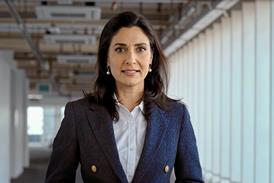




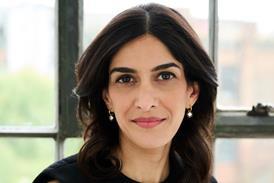
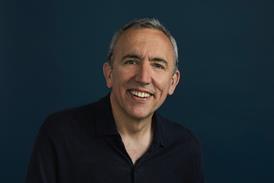

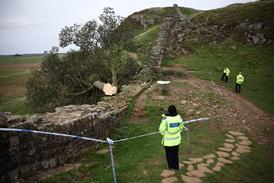
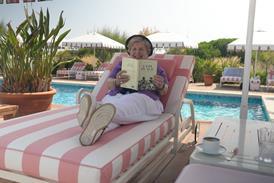







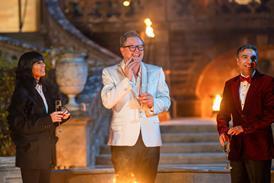
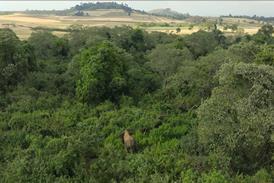
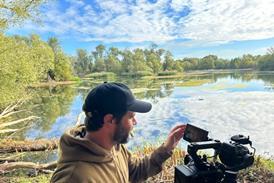



No comments yet